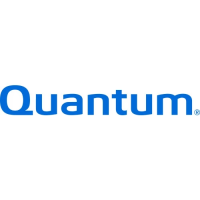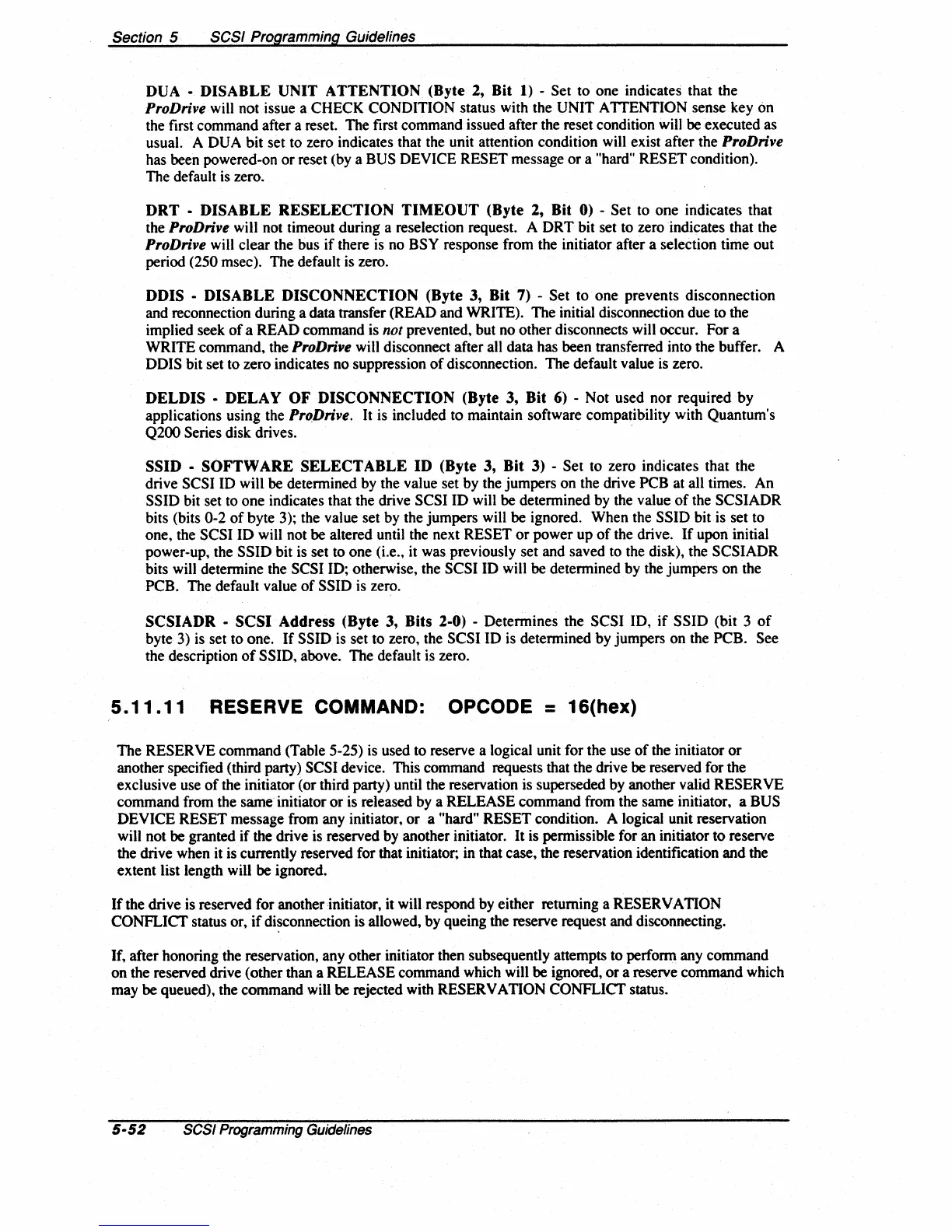Section 5
SCSI Programming Guidelines
DUA
- DISABLE UNIT ATTENTION (Byte 2, Bit
1)
- Set to one indicates that the
ProDrive will not issue a CHECK CONDITION status with the UNIT ATTENTION sense key on
the first command after a reset. The first command issued after the reset condition will be executed as
usual. A
DUA bit set to zero indicates that the unit attention condition will exist after the ProDrive
has been powered-on or reset (by a BUS DEVICE RESET message or a "hard" RESET condition).
The default
is
zero.
DRT - DISABLE RESELECTION TIMEOUT (Byte 2, Bit
0)
- Set to one indicates that
the
ProDrive will not timeout during a reselection request. A DRT bit set to zero indicates that the
ProDrive will clear the bus
if
there
is
no BSY response from the initiator after a selection time out
period
(250 msec). The default
is
zero.
DDIS - DISABLE DISCONNECTION (Byte 3, Bit 7) - Set to one prevents disconnection
and reconnection during a data transfer (READ and WRITE). The initial disconnection due to the
implied seek
of
a READ command is not prevented, but no other disconnects will occur. For a
WRITE command, the
ProDrive will disconnect after all data has been transferred into the buffer. A
DDIS bit set to zero indicates no suppression
of
disconnection. The default value is zero.
DELDIS - DELAY OF DISCONNECTION (Byte 3, Bit
6)
- Not used nor required by
applications using the
Pro.Drive.
It
is included to maintain software compatibility with Quantum's
Q200
Series disk drives. .
SSID - SOFTWARE SELECT ABLE ID (Byte 3, Bit 3) - Set to zero indicates that the
drive
SCSI ID will be determined by the value set by the jumpers on the drive PCB at all times. An
SSID bit set to one indicates that the drive SCSI ID will be determined by the value
of
the SCSIADR
bits (bits 0-2
of
byte 3); the value set by the jumpers will
be
ignored. When the SSID bit is set to
one, the
SCSI ID will not be altered until the next RESET
or
power up
of
the drive.
If
upon initial
power-up, the
SSID bit is set to one (i.e., it was previously set and saved to the disk), the SCSIADR
bits will determine the SCSI ID; otherwise, the SCSI ID will be determined by the jumpers on the
PCB. The default value
of
SSID
is
zero.
SCSIADR - SCSI Address (Byte 3, Bits 2-0) - Determines the SCSI 10,
if
SSID (bit 3
of
byte 3)
is
set to one.
If
SSID
is
set to zero, the SCSI ID is determined by jumpers on the PCB. See
the description
of
SSID, above. The default
is
zero.
5.11.11
RESERVE COMMAND: OPCODE = 16(hex)
The RESERVE command (Table 5-25) is used to reserve a logical unit for the use
of
the initiator
or
another specified (third party) SCSI device. This command requests that the drive be reserved for the
exclusive use
of
the initiator (or third party) until the reservation is superseded by another valid RESERVE
command from the same initiator
or
is released by a RELEASE command from the same initiator, a BUS
DEVICE RESET message from any initiator,
or
a "hard" RESET condition. A logical unit reservation
will not be granted
if
the drive is reserved by another initiator. It is permissible for an initiator to reserve
the drive when it is currently reserved for that initiator; in that case, the reservation identification and the
extent list length will be ignored.
If
the drive is reserved for another initiator, it will respond by either returning a RESERV
AnON
CONFLlcr
status or,
if
di~connection
is allowed, by queing the reserve request and disconnecting.
If,
after honoring the reservation, any other initiator then subsequently attempts to perfonn any command
on the reserved drive (other than a
RELEASE command which will be ignored, or a reserve command which
may
be
queued), the command will be rejected with RESERV
AnON
CONFLIcr
status.
5·52
SCSI
Programming
Guidelines

